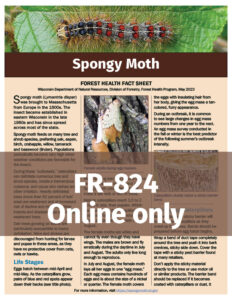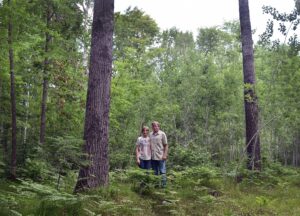
A preview of the new Wisconsin Department of Natural Resources Forest Health fact sheet on spongy moth. Graphic Credit: Wisconsin DNR
By Art Kabelowsky, DNR Outreach/Communications Specialist, Fitchburg; Arthur.Kabelowsky@wisconsin.gov or 608-335-0167
The Wisconsin Department of Natural Resources’ (DNR) Forest Health team has debuted seven new fact sheets, providing information on various forest insects and diseases as well as tips on how to deal with their emergence on your property.
The new fact sheets provide details on spongy moth, oak wilt management, spruce budworm, jack pine budworm, tamarack insects (larch casebearer and eastern larch beetle), red pine pocket decline and mortality and a comparison of common spring defoliator caterpillars (forest tent caterpillar, eastern tent caterpillar and spongy moth).
Additionally, the Forest Health team has updated and/or refreshed the look of its 13 existing fact sheets.
Continue reading “Forest Health Team Offers Seven New Fact Sheets, Updates Website”


